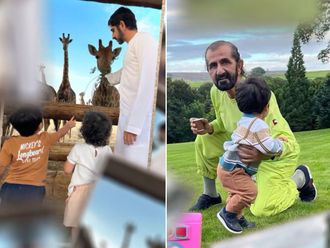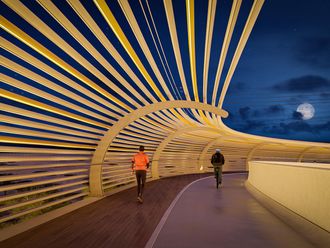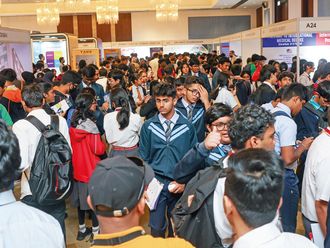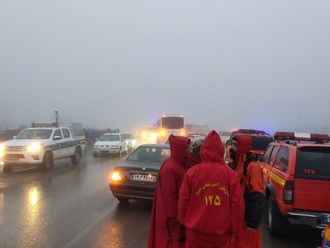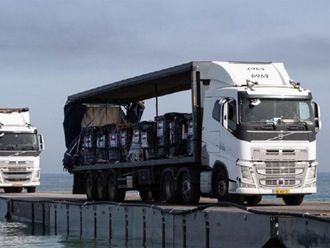Dubai's first-ever houbara bustard breeding centre at Nakhlee is all set to take wing in September with the initiation of a trial breeding programme to produce the falconer's favourite quarry for experimental and research purposes.
This project, born out of an exciting and unique cooperation agreement between General Sheikh Mohammed bin Rashid Al Maktoum, Dubai Crown Prince and UAE Defence Minister, and a wildlife conservation centre in Morocco sponsored by HRH Prince Sultan bin Abdul Aziz Al Saud, Second Deputy Premier and Minister of Defence and Civil Aviation of Saudi Arabia, was announced earlier this year.
The Dubai houbara breeding centre aimed at stepping up the population of this rapidly depleting species in the wild has quickly moved from initiation to a fruition stage in a matter of few months.
Paul McCormick, Director General of Dubai's partner in this venture, the highly successful Morocco-based houbara breeding centre, Prince Sultan bin Abdul Aziz Al Saud International Foundation for Conservation & Development of Wildlife (IFCDW), said:
"We are really keen to get things moving and start producing houbara bustards by early next year in Dubai."
Yet, this first batch of birds will not be bred to be released into the wild to be hunted but used just for experimental and research reasons, clarified McCormick.
The reason being that the ready to reproduce houbara bustards loaned by the IFCDW to kickstart the Dubai project belong to the North African species and not the Asian migratory stock common to this area.
McCormick pointed out: "The houbara bustards bred in the IFCDW belong to the North African sub-species, while we need to attempt to replicate our centre's success in Dubai with a different sub-species - the Asian houbara.''
The actual breeding programme at the Dubai centre will be launched only during next year's breeding season through the time-tested method of starting a breeding centre - from the collection of houbara eggs from the wild. But for now, the first batch of houbaras bred at the Dubai centre will purely be on an experimental basis.
The experimental breeding programme, which will witness the birth of the houbara bustards through artificial insemination in intensely controlled and sanitised environments, is intended to train the new staff at the fledgling Dubai breeding centre and establish the coping levels of the newborns to the UAE climate, added McCormick.
The houbara bustards are known to be extremely finicky birds and reproduce only in favourable climatic conditions.
The nine-year-old IFCDW, which has had a record production of 1,500 chicks this year is fast turning out to be a classic model for captive bird breeding programmes in the world.
"We shall apply all our years of experience and the wealth of knowledge gained at our Centre to making the Dubai one a success,'' assured McCormick, an avian expert and a great proponent in maintaining a genetic diversity to create a successful captive breeding programme.
Presently, the physical structure of the Dubai breeding centre located in a 10-hectare stretch at Nakhlee has been completed in record time.
The next stage would involve setting up the scientific equipments, the chick rearing rooms, the incubators, the pens and laboratories required for a bird breeding centre.
Even as the two-year-old houbara bustard ready for reproduction will be flown to Dubai after the gruelling summer heat subsides, the IFCDW will also dispatch two of their Moroccan trained staff to set up this latest conservation initiative in wildlife management to protect this ordinary looking sand-coloured bird so intrinsic to the Arab tradition of falconry.
Houbara bustard centre set to take wing
Dubai's first-ever houbara bustard breeding centre at Nakhlee is all set to take wing in September with the initiation of a trial breeding programme to produce the falconer's favourite quarry for experimental and research purposes.


